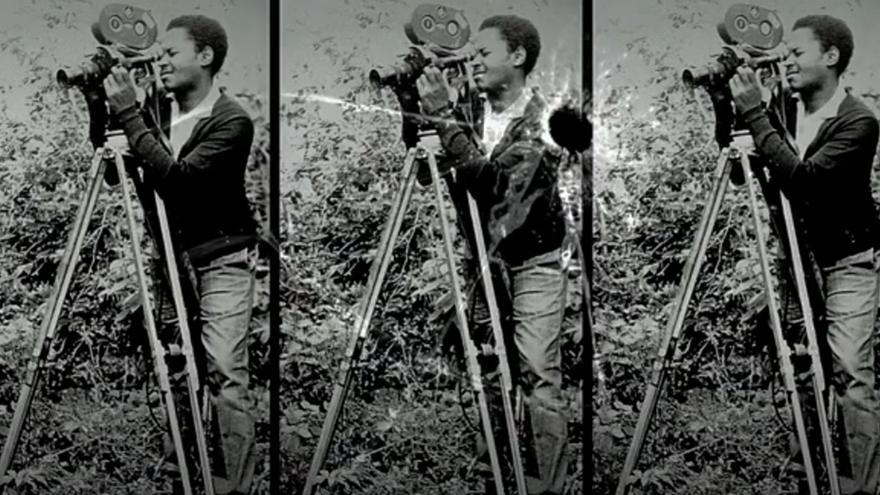
![]() EFE (via 14ymedio), Gonzalo Sánchez, Venice, 3 September 2023 — Nicolás Landrián was a visionary of Cuban cinema but post-revolutionary censorship ultimately marginalized his work. His films have now been taken out of storage, giving the general public access to his legacy thanks to a documentary, which recently premiered at the Venice International Film Festival, that bears his last name.
EFE (via 14ymedio), Gonzalo Sánchez, Venice, 3 September 2023 — Nicolás Landrián was a visionary of Cuban cinema but post-revolutionary censorship ultimately marginalized his work. His films have now been taken out of storage, giving the general public access to his legacy thanks to a documentary, which recently premiered at the Venice International Film Festival, that bears his last name.
“In his time, he was probably Cuba’s best-known filmmaker after Tomas Gutierrez, Alea Titón and Humberto Solás but he remains unknown to the general public,” says the producer of Landrián, Ernesto Daranas Serrano.
The documentary, which was presented as part of the festival’s Venice Classics series, follows the search through Havana’s film archives for cans of footage shot by the director, who was Cuba’s first black filmmaker and whose work was largely forgotten due to censorship.
Landrián (1938-2003) was the nephew of the poet Nicolás Guillén. Though he actively opposed the Batista dictatorship, after the revolution he was accused of having a “licentious attitude” and for comments “not in keeping with a young revolutionary” according to files shown in the documentary.
His camera captured the folklore and idiosyncrasies of Cuban society while questioning the widespread propaganda and fervor following the triumph of Fidel Castro’s Revolution in 1959. (His 1968 documentary Coffea Árabiga even satirized coffee production.) continue reading
Landrián (1938-2003), was the nephew of the poet Nicolás Guillén. Though he actively opposed the Batista dictatorship, he was accused of having a “licentious attitude” after the 1959 Revolution
“I have never fit in anywhere except in my work,” he often said.
Thus, “ideological deviation” became his cross to bear and a permanent part of his record. He was subjected to perennial incarceration, then to electric shock in psychiatric clinics, until he managed, along with many others, to go into exile in Miami.
It was there that he would die of pancreatic cancer in 2002. Meanwhile, back on the island, the public’s memory of him began to fade as his films rotted away on archive shelves.
But two decades later, the idea of restoring his legacy came about almost by accident. In 2019 Daranas was snooping around the Cinemateca de Cuba while working on another project and noticed the “unfortunate” state of conservation of the film heritage he found stored in its archives.
One of Landrián’s films that came to have great sentimental value for Daranas was Ociel del Toa (1965). During his childhood he saw this film, a story about people living along the Toa River, countless times in movie theaters because it was used as filler during screening interruptions.
“Half the film was lost and the other half very badly damaged. I wondered about the rest of Landrián’s works. All of them were more or less in the same condition and no one knew where some of them were,” he said.
With a go-ahead from the president of the Cuban Institute of Cinemagraphic Art and Industry (ICAIC), Daranas began searching for the negatives in hopes of restoring them.
Daranas is critical of the role censorship plays in Cuban cinema, a hot topic among Cuban filmmakers, who are currently demanding government officials meet with them to discuss it.
“I am not the only one to condemn censorship in Cuban cinema. It’s an issue for all the members of the union of Cuban filmmakers, who right now are demanding our government have discussions with us about censorship,” says Ernesto Daranas
Little by little, ten of these lost films were found. They include Los del Baile (The Dancers, 1965); En un Barrio Viejo (In an Old Neighborhood, 1963), winner of the Krakow Film Festival; and Ociel del Toa itself, which won an award at SEMINCI, the Valladolid Film Festival.
Daranas’ documentary recounts efforts to first recover the lost films in Havana and then to send them to Madrid for restoration.
Ladrián comes across as a Christ-like figure who was said to have been born “with his eyes wide open.” He is described in film by those who knew him, such as his wife, Gretel Alfonso Fuentes, and his director of photograph, Livio Delgado.
“With the ten films we have restored and with this documentary, we are hoping to introduce this exceptional filmmaker to a wider audience. He faced a problem that unfortunately many Cuban filmmakers are still facing today, which is censorship,” says Daranas.
“Censorship still hangs like a sword of Damocles over Cuban cinema,” he adds.
“I am not the only one to condemn censorship in Cuban cinema. It’s an issue for all the members of the union of Cuban filmmakers, who right now are demanding our government have discussions with us about censorship and how it has harmed so much cinema and so many lives,” he says.
The screening of his documentary at the prestigious Venice Festival is doubly valuable for Cuban filmmakers like Daranas.
First, it recognizes an “exceptional and virtually unknown” filmmaker like Landrián, says Daranas, who won the King of Spain Journalism Award for his documentary The Last Pipers of Havana. Second, it is validates “the struggle that Cuban filmmakers are still waging today against censorship and exclusion.”
____________
COLLABORATE WITH OUR WORK: The 14ymedio team is committed to practicing serious journalism that reflects Cuba’s reality in all its depth. Thank you for joining us on this long journey. We invite you to continue supporting us by becoming a member of 14ymedio now. Together we can continue transforming journalism in Cuba.</p
